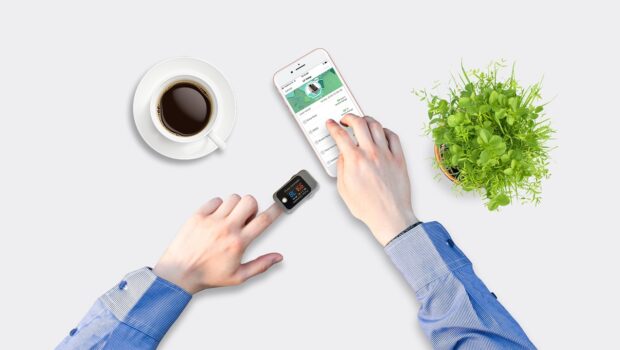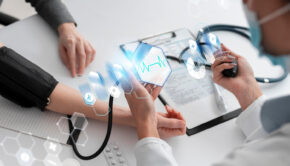Wearable Technology & IoT Are Transforming the Healthcare Industry
Wearable technology in healthcare includes various electronic devices that users can wear like smartwatches, Fitbits, and these are designed to collect information on personal health. IoT has transformed the healthcare industry and it’s still working on making things more efficient than before.
The customer base in the US has jumped to 33% in the case of wearable technology in recent years. This means people are more concerned about their health and want to cross the physical barriers. Other than the medical industry, people are getting more cautious about their health with the help of smart wearables.
These trackers are helpful in mapping heartbeats, weight loss, blood pressure, and other health-related things. Let’s find out how these wearables are transforming the healthcare industry.
Wearable fitness trackers
This is one of the simplest versions of healthcare wearable. You can wear this tracker like a wristwatch. This device is an automated one that will track your heart rate during physical activities. Users get recommendations from the device on syncing it with your smartphone app.
The Fitbit Flex is the old version and a popular option for technology buffs. Users are attracted to the fashionable look and the ability to track their progress of the entire day. Five indicator lights will map your activity through the day. In this case, JD Edwards Managed Services also made some innovations, which will help not only the healthcare sector but other sectors where wearables are needed.
Smart Health Watches
These watches have transformed from fitness trackers. This is an advanced version where you not only get to track your heartbeat, and daily activities, it will show you time, and catch any signs of strokes. Apple company has invented these smartwatches for the benefit of heart and high blood pressure patients. This device is also considered as the new insight for Parkinson’s disease.
Smartwatches allow people to perform usually they get from their phones. They will get notifications, make phone calls, send a message, even listen to music. They will get a full reading of their heart rate while exercising.
Wearable ECG Monitors
These are cutting-edge consumer devices, and the difference between these and smartwatches is their ability to check ECGs or electrocardiograms. Doctors can suggest these monitors for heart patients, as they can recognize atrial fibrillation. This device can also track distance, pace, and elevation. It can track the measures while you are biking, walking, swimming, or running.
Biosensors
These are wearable medical devices that are different from smartwatches and trackers. The Phillip’s have introduced a similar device that will collect data on the patent while they are on the move.
It will detect the temperature, heart, and respiratory rate. Researchers conducted in various medical centers have shown that 89% of patients have got benefits from wearable technology. As it worked in detecting respiratory and cardiac arrest.
Wearable Blood Pressure Monitors
This is a heart guide that was launched in 2019, as the first blood pressure monitoring device. It looks like a normal smartwatch but it can measure blood pressure daily.
It has other facilities like the distance you traveled, the steps you have walked, and the calories you have burned. This guide can take up to hundred readings, and you can transfer it to your mobile app. The device can track, store and share the daily data to the doctors.
Advancement in medical devices
The market for wearable healthcare technology is rising every day. According to a study in the USA, the market of healthcare wearables will surpass 120 million in 2023. The trend of healthcare wearables will help in the decision-making for insurers and healthcare providers. This technology will reduce hospital visits, and readmissions.
This used to happen when people poorly managed their health. With the help of healthcare wearables, people can take care of themselves and detect the signs of health issues immediately. Companies are also seeing better advantages of wearables for their employees. With the help of these organizations are getting fewer turnovers a year.
The US customers used to utilize wearables in 3% only. But in recent years it has increased to 33%. This number will grow in the future, and wearables technology will become conventional. Furthermore, device connectivity will improve and it will offer developed sensors.
Not just insurers, but doctors, employees will get better benefits from the same. In this case, JD Edwards Managed Services is offering several wearable technology benefits to its clients and customers.
















